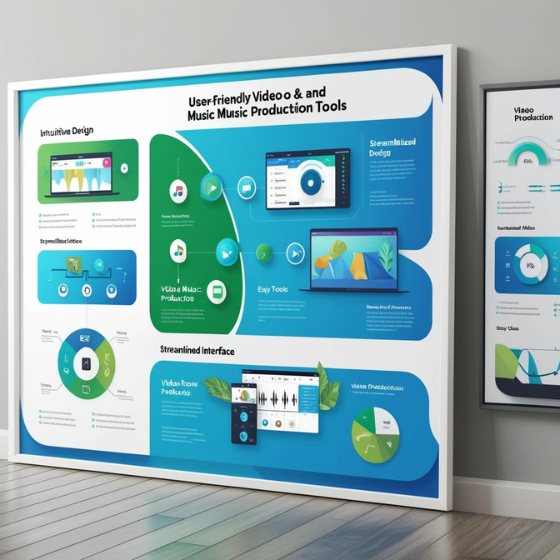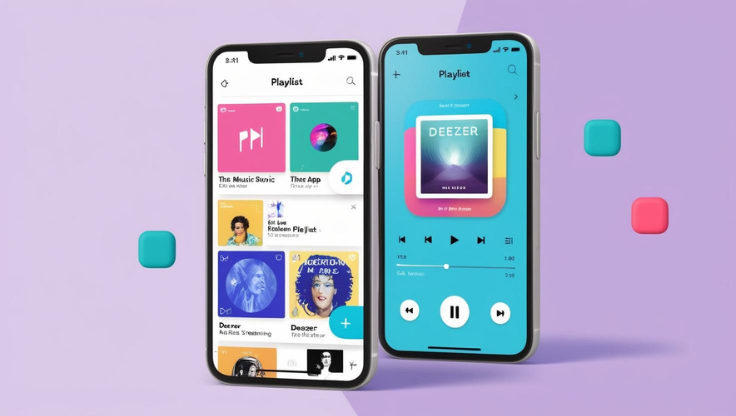How to Develop User-Friendly Video and Music Production Tools
In the digital era, where content creation reigns supreme, video and music production tools play a pivotal role in empowering creators. Did you know that 63% of businesses already use video content as a marketing tool, while the demand for easy-to-use music creation tools continues to rise among aspiring artists? With user expectations higher than ever, understanding how to develop user-friendly video and music production tools can set your product apart in a competitive market.
In this blog, we’ll explore the essential principles, best practices, and actionable insights for creating intuitive, efficient, and impactful video and music production tools. Whether you’re an entrepreneur, a product manager, or a developer, this guide will walk you through everything you need to know to design tools that your users will love.
Why User-Friendliness is Key in Video and Music Tools
Creating content can be a complex and daunting task for many users. The right tools simplify this process, making creativity accessible to everyone. Here’s why focusing on user-friendliness is non-negotiable:
- Increased Adoption Rates: Tools that are easy to learn and use attract more users.
- Higher Retention: A seamless experience encourages users to stick with your product over competitors.
- Positive Brand Perception: Tools that solve problems intuitively are often praised in reviews and word-of-mouth recommendations.
- Scalability: A tool that appeals to beginners and professionals alike can tap into a broader market.
Actionable Tip:
Before diving into development, identify your target audience’s pain points. Understanding these challenges will guide you in creating features that truly resonate with users.
Steps to Develop User-Friendly Video and Music Production Tools
1. Start with Comprehensive User Research
Developing a successful tool begins with understanding your audience:
- Who are they? Are they beginners, hobbyists, or professionals?
- What do they need? Identify the common frustrations with existing tools.
- How do they work? Observe how users interact with similar tools to uncover patterns.
Pro Tip: Conduct surveys, interviews, and usability tests during the early stages of development. Use this data to shape the core functionality of your tool.
2. Focus on a Clean and Intuitive Interface
A cluttered interface is a major turn-off for users. Strive to create a layout that is simple, visually appealing, and functional:
- Minimalism is key: Keep only the most important tools upfront.
- Use visual hierarchies: Highlight essential features while tucking advanced options under collapsible menus.
- Maintain consistency: Uniform fonts, buttons, and color schemes enhance the user experience.
Example:
Popular tools like Adobe Premiere Pro may be powerful but intimidating for beginners. Canva, on the other hand, simplifies video editing with a drag-and-drop interface.
Explore more about user interface design principles here.
3. Integrate AI and Automation
With the rise of AI, users expect tools that do the heavy lifting for them. Integrating smart features can significantly enhance usability:
- AI Suggestions: Automatically recommend filters, effects, or transitions based on the content.
- Speech-to-Text Capabilities: Simplify captioning for videos.
- Preset Templates: Offer ready-made templates for quick and professional-looking outputs.
Case Study:
Sodio recently collaborated with a creative tool startup to incorporate AI-assisted editing features. This not only boosted user satisfaction but also reduced production time by 40%.
Learn more about Sodio’s AI integration services here.
4. Prioritize Cross-Platform Functionality
Creators often work across multiple devices. Ensure your tools are compatible with:
- Desktop and Mobile: Offer seamless experiences across platforms.
- Cloud Integration: Enable users to save and access projects on the go.
- Third-Party Plugins: Provide support for popular software extensions to expand capabilities.
5. Optimize Performance and Accessibility
Lagging tools can frustrate users and derail creativity. Ensure your product is:
- Fast and Responsive: Conduct stress tests to ensure smooth performance, even with complex projects.
- Accessible to All: Include features like adjustable font sizes, dark mode, and voice commands.
Bonus Insight:
Tools like GarageBand are celebrated not just for their functionality but also for their seamless performance on iOS devices.
Common Challenges in Development and How to Overcome Them
Developing user-friendly video and music tools isn’t without its hurdles. Here are some common challenges and solutions:
- Complexity vs. Simplicity
- Challenge: Balancing powerful features with ease of use.
- Solution: Implement modular designs where users can unlock advanced tools as needed.
- Compatibility Issues
- Challenge: Ensuring the tool works across devices and operating systems.
- Solution: Invest in thorough cross-platform testing.
- High Development Costs
- Challenge: Building sophisticated tools can strain budgets.
- Solution: Partner with a trusted development team like Sodio to streamline the process.
How Sodio Can Help
At Sodio, we specialize in building tailored tech solutions that prioritize user experience. From AI-driven tools to cross-platform compatibility, our team ensures your product not only meets industry standards but exceeds user expectations.
Why Choose Sodio?
- Expertise in developing cutting-edge video and music production tools.
- Proven track record of creating user-friendly, scalable software solutions.
- End-to-end support, from ideation to deployment.
Explore our services here or contact us for a personalized consultation.
Conclusion
Creating impactful video and music production tools requires a deep understanding of your audience, a focus on intuitive design, and a commitment to innovation. By following these strategies, you can develop tools that empower creators and drive long-term success for your product.
Are you ready to turn your vision into reality? Let Sodio help you build tools that redefine user experience. Contact us today or subscribe to our newsletter for more insights.







